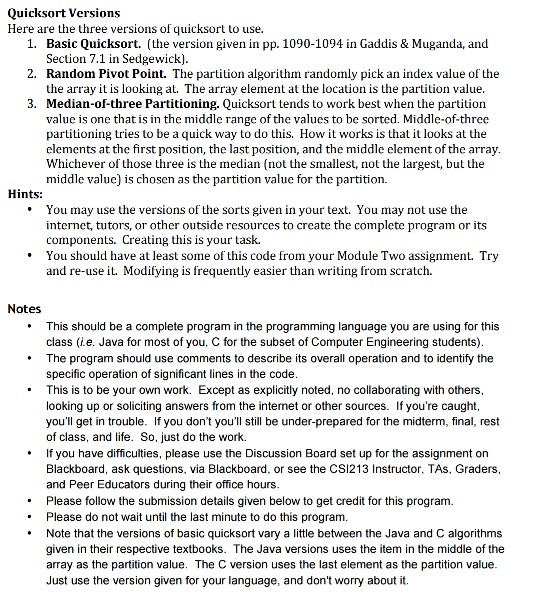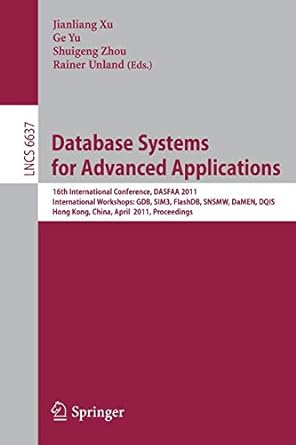Answered step by step
Verified Expert Solution
Question
1 Approved Answer
Read the instructions carefully I'm not afraid to give a thumbs down if it's incorrect. make sure it compiles!! Following up on our Module 2


Read the instructions carefully I'm not afraid to give a thumbs down if it's incorrect. make sure it compiles!!
Following up on our Module 2 assignment where we examined the performance of three sorting algorithms, we are going to look more closely at one of them quicksort. Quicksort is a widely used sorting algorithm. However, it has some drawbacks. It sometimes does not perform well, depending on the nature of the list [https://en.wikipedia.org/wiki/Quicksort]. Since the algorithm's publication there have been many variations that attempt to get around these shortcomings. In this program we will look at three variations of quicksort We will compare them on ten randomly generated lists of 1000 items. In addition, we will look at the algorithms' performance on both a sorted and reverse sorted (sorted highest to lowest) version of each list. We wil look at the behavior of three different versions of quicksort on randomly generated lists of size 1000 The three versions of quicksort are described below Randomly generate integers in the range 0-99 for your random numbers. You may choose your own random number generation technique (this is an exception to the no-outside-help requirement for this assignment You must document the source of your random number generation in the code. Here is what your code should do: 1. Do this 10 times: Generate a random list of 1000 items. Make a sorted version of the list. Use whatever sort you want to do this. You do not need to demonstrate, annotate, etc. this sort. a. b. c. Make a reverse-sorted (i.e. high to low) version of the list Modify whatever sort you want to do this. You do not need to demonstrate, annotate, etc. this sort. Have each version of quicksort sort each of the three lists. Give the original list, the sorted list, and the number of comparisons done by each version of the algorithm. d. e. 2. At the end: For each quicksort version and each list type (random, pre-sorted, reverse- sorted) give the average of the number of comparisons. aStep by Step Solution
There are 3 Steps involved in it
Step: 1

Get Instant Access to Expert-Tailored Solutions
See step-by-step solutions with expert insights and AI powered tools for academic success
Step: 2

Step: 3

Ace Your Homework with AI
Get the answers you need in no time with our AI-driven, step-by-step assistance
Get Started


